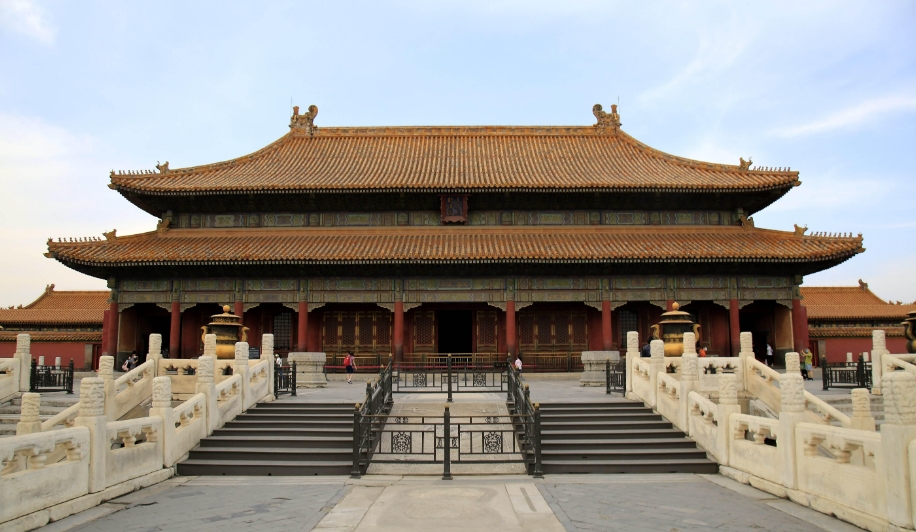
The Forbidden City: China's Best-Preserved Imperial Palace
Nestled in the heart of Beijing, the Forbidden City stands as a testament to China's imperial past. More than just a palace, it is the world's largest, oldest, and best-preserved collection of wooden buildings and palaces, encompassing a sprawling complex of 980 structures. Its history spans nearly six centuries, serving as the imperial residence from the Ming Dynasty to the end of the Qing Dynasty.
A Legacy in Wood and Stone:
The Forbidden City's exceptional preservation is a marvel, considering its age and the perishable nature of its primary construction material - wood. This resilience is attributed to several factors:
- Superior Materials and Craftsmanship: The buildings were constructed using high-quality, carefully selected timber, primarily Phoebe zhennan wood, known for its strength, durability, and resistance to decay and insects. Master craftsmen employed sophisticated interlocking joinery techniques, eliminating the need for nails and ensuring structural integrity.
- Rigorous Maintenance: Throughout its history, the Forbidden City underwent meticulous upkeep. Dynasties allocated significant resources for repairs, renovations, and preventive measures against fire, pests, and weather damage. This tradition continues today, ensuring its continued preservation.
- Symbol of Imperial Power: As the epicenter of imperial power, the Forbidden City was imbued with immense cultural and symbolic significance. This status ensured its protection and careful preservation across successive dynasties.
Beyond Preservation: A Window into the Past:
The Forbidden City's importance extends beyond its architectural splendor. It offers an unparalleled glimpse into the grandeur and intricacies of imperial life in China:
- Architectural Harmony: The layout adheres to strict principles of symmetry and hierarchy, reflecting Confucian values and the emperor's supreme position. Courtyards, gates, and halls are meticulously arranged along a north-south axis, symbolizing the emperor's connection to the heavens.
- Rich Decorations and Symbolism: Intricate carvings, vibrant paintings, and elaborate roof decorations adorn the buildings, each element imbued with symbolic meaning. Dragons represent imperial power, phoenixes signify empress and feminine energy, and mythical creatures ward off evil spirits.
- Museum of Imperial Treasures: Today, the Forbidden City houses the Palace Museum, showcasing a vast collection of imperial artifacts, artwork, and furnishings. From exquisite porcelain and jade carvings to calligraphy scrolls and royal garments, these treasures provide tangible connections to China's imperial past.
The Forbidden City's enduring legacy lies not only in its architectural brilliance but also in its ability to transport visitors back in time. It allows us to marvel at the craftsmanship of a bygone era, decode the symbolism embedded within its walls, and gain a deeper understanding of China's rich history and cultural heritage.
Q&A:
1. What is the significance of the name "Forbidden City"?
The name "Forbidden City" comes from the Chinese name "Zijin Cheng", meaning "Purple Forbidden City." It was considered "forbidden" because ordinary citizens were not allowed to enter without special permission. The "Purple" referred to the North Star, believed to be the residence of the celestial emperor, signifying the emperor's divine mandate to rule.
2. What role did the Forbidden City play in Chinese history?
The Forbidden City served as the political and ceremonial center of China for nearly 500 years. It was from here that emperors ruled, enacted laws, received foreign dignitaries, and conducted important rituals. Its design and layout reinforced the emperor's absolute authority and the hierarchical structure of Chinese society.
3. What are some threats to the Forbidden City's preservation today?
While remarkably well-preserved, the Forbidden City faces challenges such as pollution, climate change, and the sheer volume of tourists. Preservation efforts focus on monitoring structural integrity, controlling humidity and temperature, and implementing sustainable tourism practices to minimize wear and tear.